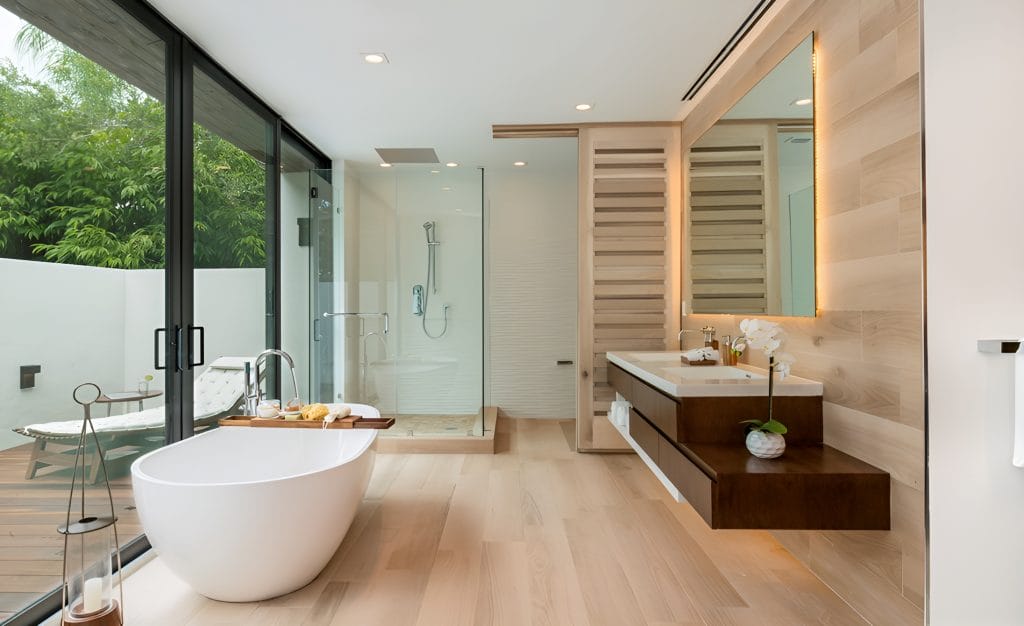In the realm of smart home technology, the bathroom lighting automation setup has emerged as a pivotal trend, revolutionizing the way we illuminate our personal spaces. With a focus on convenience, energy efficiency, and enhanced aesthetics, this setup not only modernizes your bathroom but also adds a touch of luxury to your daily routine. For those in the Industry QA sector, understanding the nuances of this setup is crucial, as it combines technical precision with user-centric design.
Bathroom lighting automation setup is not just about replacing traditional switches with modern alternatives; it's about creating a seamless integration of technology and design. From motion sensors to voice-activated controls, the possibilities are endless. This article will guide you through the essentials of setting up an automated bathroom lighting system, ensuring it meets both functional and aesthetic standards.

The Importance of Automated Lighting in Bathrooms
Lighting plays a critical role in defining the atmosphere of any space, and bathrooms are no exception. Proper lighting can transform a mundane bathroom into a spa-like retreat. Automated lighting systems offer numerous benefits, such as energy savings, improved safety, and convenience. For example, integrating smart lighting with motion sensors ensures that lights turn on automatically upon entering the bathroom, providing immediate illumination without fumbling for switches.
Moreover, automated lighting systems can be programmed to adjust the brightness and color temperature according to the time of day or your personal preferences. This level of customization enhances the overall user experience, making daily routines more enjoyable and efficient. To explore more about how automation can enhance bathroom safety, you might find this article on bathroom safety automation insightful.
Key Components of a Bathroom Lighting Automation Setup
Smart Bulbs
At the heart of any automated lighting system are smart bulbs. These bulbs can be controlled remotely via smartphone apps or voice commands, allowing you to adjust lighting settings without physically interacting with the fixtures. Opt for bulbs that offer a wide range of brightness levels and color temperatures to suit different moods and activities.
Sensors and Controls
Incorporating sensors into your bathroom lighting setup enhances its functionality and efficiency. Motion sensors detect movement and activate lights, ensuring they are only on when needed. Additionally, smart switches and dimmers provide manual control over lighting levels, allowing for on-the-fly adjustments.
Integration with Smart Home Systems
To maximize the benefits of your bathroom lighting automation setup, consider integrating it with existing smart home systems. This allows for centralized control of all smart devices, creating a cohesive and streamlined user experience. Voice assistants like Amazon Alexa or Google Assistant can be paired with your lighting system, enabling hands-free operation through simple voice commands.
Designing the Perfect Bathroom Lighting Automation Setup
Design plays a crucial role in the effectiveness of a bathroom lighting automation setup. It's essential to consider the layout and functionality of your bathroom when planning your lighting system. Layered lighting, which combines ambient, task, and accent lighting, is a popular approach for creating a balanced and versatile lighting environment.
For instance, ambient lighting provides general illumination, while task lighting focuses on specific areas such as the vanity or shower. Accent lighting can highlight architectural features or decorative elements, adding depth and interest to the space. For more design inspiration, you can check out this guide on stylish bathroom designs.
Challenges and Solutions in Bathroom Lighting Automation
Implementing a bathroom lighting automation setup can present several challenges, particularly in older homes with outdated electrical systems. Retrofitting these systems to accommodate smart technology may require professional assistance to ensure safety and compliance with building codes. Additionally, wireless connectivity issues can arise, especially in bathrooms with thick walls or limited Wi-Fi coverage.
To overcome these challenges, invest in reliable smart home hubs and extenders to boost connectivity. Consulting with experts in smart home installations can also provide valuable insights and solutions tailored to your specific needs. For those interested in setting routines and optimizing their bathroom experience, this article on setting routines for bathroom offers practical tips.
Conclusion: The Future of Bathroom Lighting Automation
The future of bathroom lighting automation holds exciting possibilities, with advancements in technology paving the way for more intuitive and efficient systems. As the Industry QA sector continues to evolve, staying informed about the latest trends and innovations in smart home technology is essential. By understanding and implementing a bathroom lighting automation setup, you can enhance the functionality, safety, and aesthetic appeal of your bathroom, transforming it into a modern sanctuary.
For further reading on smart bathroom technology trends, you might find this review of smart bathroom technology trends informative.

FAQs
What are the benefits of bathroom lighting automation?
Bathroom lighting automation offers numerous benefits, including energy savings, improved safety, and enhanced convenience. Automated systems provide immediate illumination, adjust according to user preferences, and can be integrated with other smart home devices for a seamless experience.
How much does it cost to set up automated bathroom lighting?
The cost of setting up automated bathroom lighting varies depending on the complexity of the system and the quality of components. Basic setups with smart bulbs and sensors can start at a few hundred dollars, while more advanced systems with integrated controls and professional installation may cost upwards of a thousand dollars.
Can I install a bathroom lighting automation setup myself?
Yes, many bathroom lighting automation components are designed for DIY installation, especially smart bulbs and motion sensors. However, if your setup involves significant electrical work or integration with existing systems, it may be advisable to consult with a professional to ensure safety and compliance.






